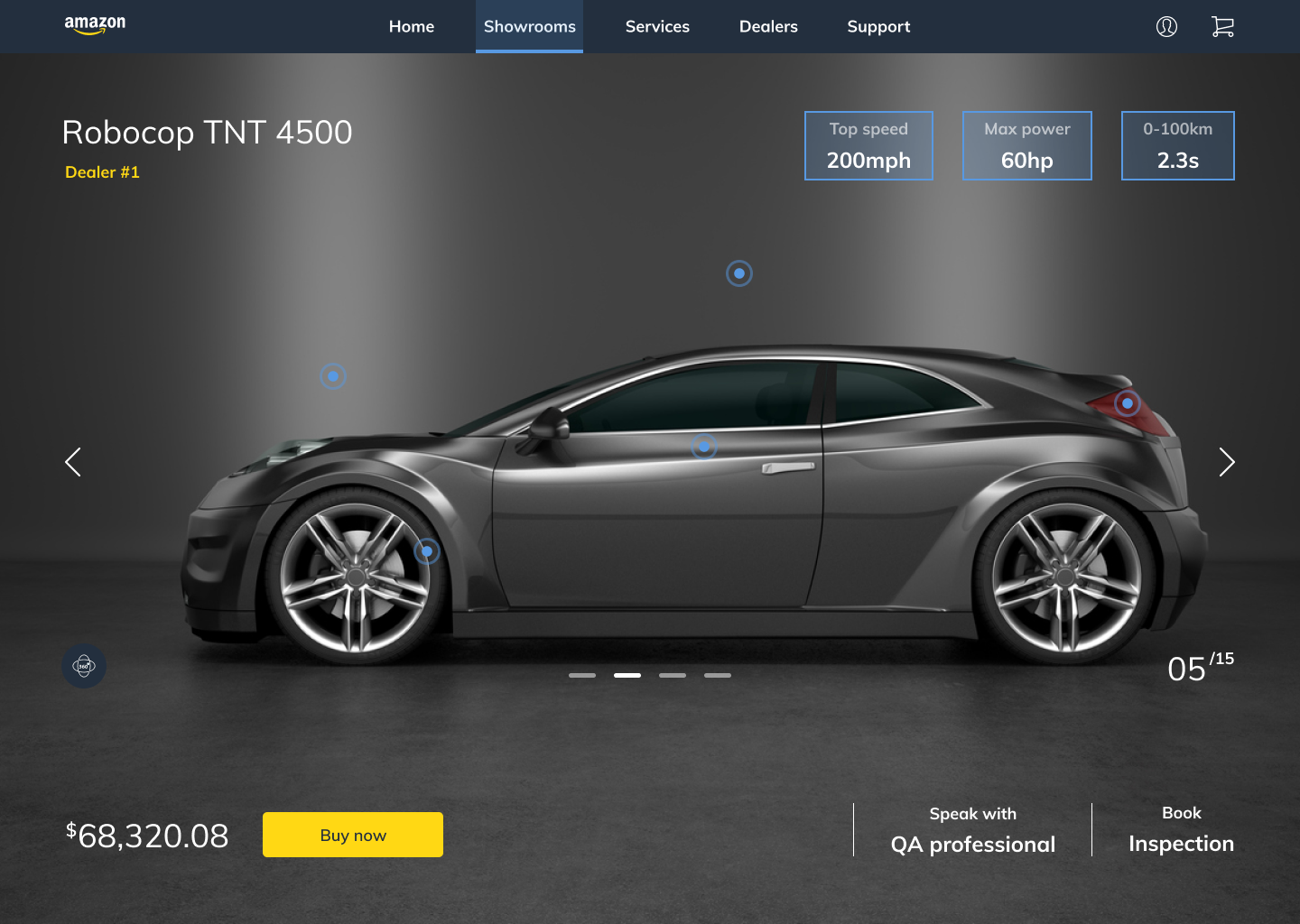
Over a duration of 4 weeks, I was involved in a product management course that was aimed at discovering and exploiting opportunities that could be leveraged upon by the titanic Amazon brand.

AMAZON as a brand is big on “building a product where anyone can find anything they want to buy online”. This project fall right in line with this vision.
In order to properly define the problem, I had to determine the target market and understand the basic need the customer would fulfill with the product. This was achieved using the 5-WHYs model.
From the defined problem, I was able to set assumptions about the problem in order to figure out what I knew about the problem at hand.
For Young Adults who want to buy a new car
Amazon is an online car-retail store
That offers a wide variety of cars at different competitive prices
Unlike car dealerships, Amazon Cars can be delivered anywhere you are, provides intuitive
personalized listings for you thus reducing search time, connects you with your dream car no
matter where you are, offers flexible payment plans for car purchases with secure payment
options
We’ll know this is true when people order more cars online than via physical car dealerships
● Customers are young adults
● Customers want to buy a new car
● Customers want to be able to choose from a wide variety of cars
● Customers want to compare prices
● Customers want their purchased cars to be delivered
● Customers want to select a car that suits their interests, habits and personalities
● Customers want access to their dream car regardless of distance
● Customers want to feel secure when purchasing something as important as a car
● Customers want to have different payment options when paying for a car
● Have you ever bought a car?
● If yes, walk me through how you went about buying the car.
● Any frustrations about the process?
● Any particular thing you liked about the process?
● Anything you would like to improve about the car buying process?
● Why did you choose the car you chose?
● If you want to purchase another car, would you prefer the process you went through?
● If no to question (1), why not?
● Where is buying a car on your priority list?
● Would you buy a car if you had a flexible payment plan?
● Why would you want to buy a car?
● What do you wish you could do with a car that you can’t do today?
● How would your (day, job, task) be different if you had a car?
.png)
.png)
.png)
.png)
.png)
The features were then prioritized using the MSCW method, T-shirt Effort estimation and Value-Effort graph. All this to determine which features we could launch as the MVP within the shortest possible time to encourage rapid reiteration.
Before building a feature, it’s crucial to define success and how you will measure it. Without it, you won’t be able to track the feature's performance, which is important to prove or disprove your hypothesis and iterate. Next, I set quantifiable data points that could be tracked and analyzed to gauge the success of the product.
%20-%20Copy.png)
%20-%20Copy.png)
%20-%20Copy.png)
.png)
.png)
.png)
The colors used were colors curated from the Amazon website with a bit of a twist. Blue was added because of its high acceptability across gender and age, and also projects feelings of safety and professionalism. All of which are geared towards making users feel safe when purchasing cars online.
.png)
%402x%20(2).png)
%402x%20(2).png)
%402x%20(2).png)
.png)
.png)
.png)
.png)
.png)
%402x%20(3).png)
%402x%20(2).png)
.png)
.png)





.gif)
.gif)
From the research, it’s plain to see the vast opportunities that exist in the car retail industry.
For an online business to convert people who buy from their local or trusted dealer(ship), it has to make the product appeal to the senses of touch, sight, and hearing. This will increase people's trust in the brand's ability to deliver
An expansion to include this sector would bring Amazon a step closer to its vision of “building a product where anyone can find anything they want to buy online”